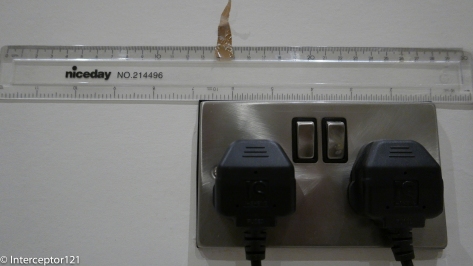Following the previous review that was dedicated to still images we now go into the subject of 4K video with the Panasonic LX100 and related Nauticam LX-100.
Currently there are only two compact cameras that produce 4K video the Sony RX100 and the Panasonic LX100.
The housing for the Sony RX100 has a traditional M67 port whilst the LX100 uses the N50 compact port system.
This means you can use all your wet lenses with the RX100 without specific adapters. The LX100 has however a number of benefits.
This table compares the field of view of the two cameras in 4K video mode.
| LX100 | |||||
| 4K | Horizontal FOV | Vertical FOV | Diagonal FOV | Sensor width | 35mm 3:2 |
| 26.00 | 71.90 | 44.40 | 79.50 | 15.80 | 23.86 |
| 81.00 | 26.20 | 14.90 | 29.90 | 15.80 | 74.40 |
| RX100 | |||||
| 4K | Horizontal FOV | Vertical FOV | Diagonal FOV | Sensor width | 35mm 3:2 |
| 28.00 | 67.90 | 41.50 | 75.40 | 11.85 | 26.73 |
| 80.00 | 26.00 | 14.80 | 29.60 | 11.85 | 76.37 |
When the camera shoots in 4K mode the focal length remains the same however the camera uses a smaller part of the sensor. A normal micro four third sensor measures 17.3×12 mm whilst the 1″ sensor of the RX100 is 13.2×8.8 mm. Note that the LX100 does not use the whole sensor due to the multi aspect format that keeps the diagonal field of view unchanged regardless of the image format.
What we can see in the LX100 table is that although the focal length in 4K is 26mm the horizontal field of view is the same of a full frame camera with a lens of 23.86mm this means the field of view in 4K should be slightly wider than a picture taken by the LX100 in 4:3 format.
I put the camera on a tripod and took two sample shots, this is the first at 24mm in 4:3 format that I then cropped to 16:9.

This other shot is from exactly the same position taken extracting a 4K frame from a small video.

As stated the horizontal dimension is just a few mm wider in 4K 16:9.
What this means is that this is the same that any normal camera with a 24mm lens that then is cropped to movie format in terms of field of view.
The Sony RX100 does not have a multi aspect sensor and therefore the horizontal field of view drops more.
With the short port on the LX100 using a wet lens like the Inon UWL-H100 we can achieve more than 97° horizontal which is very wide and zoom all the way to 79° and if we use a wetmate or the mini dome cover the other range between 72° and 50°.
Practically the LX100 with wet lenses and wetmate or minidome gives you access to focal lengths between 15.5-21mm and again 24-35mm is like having an 8-18mm lens on a micro four third which is good for whale sharks and mantas this is even wider than the 7-14mm lens on a Panasonic GH4 in 4K and the LX100 has a (weak) optical stabiliser on the lens.
The RX100 mark IV instead can only cover between 96° and 90° before the wet lens stops working properly and we jump to 68° if using a wetmate.

This shot taken at around 15cm shows a nearly rectilinear and very wide image.
In short if you are after some super wide angle in 4K the LX100 is definitely the way to go.
From an ergonomic point of view I shoot video in shutter priority and let the camera work out ISO and aperture, this is relatively easy to do with the LX100 although the absence of custom memory modes on a mode dial is painful.
A control that can be quite useful due to the tendency of the LX100 to go focus hunting is to set the ae/af lock button to af-on. This requires the shutter to be set in release priority with this control you can use manual focus and force the LX100 to refocus when you hit the af-lock. This is a very useful feature.
Update 28 September the method described to fight focus hunting does not work in 4K. There is going to be another post with the best settings for 4K video for the LX100.
For what concerns macro both the LX100 and RX100 present their challenges due to the short zoom lens, the LX100 more so due to the horrible rectangular port. It can be argued that you can’t shoot wide and macro with the LX100 whilst you can do that with the RX100 however the strength of the LX100 is certainly in its very wide lens and the short port that combined with a flat wide angle lens can produce an extremely wide field of view able to cover practically almost any wide angle scene.
For macro the GH4 and upcoming GX8 are probably going to be better placed due to the higher crop factor giving focal lengths in excess of 100mm using the 14-42mm lenses.
If you want to get into 4K video and your focus is primarily wide angle the LX100 is an excellent device.
